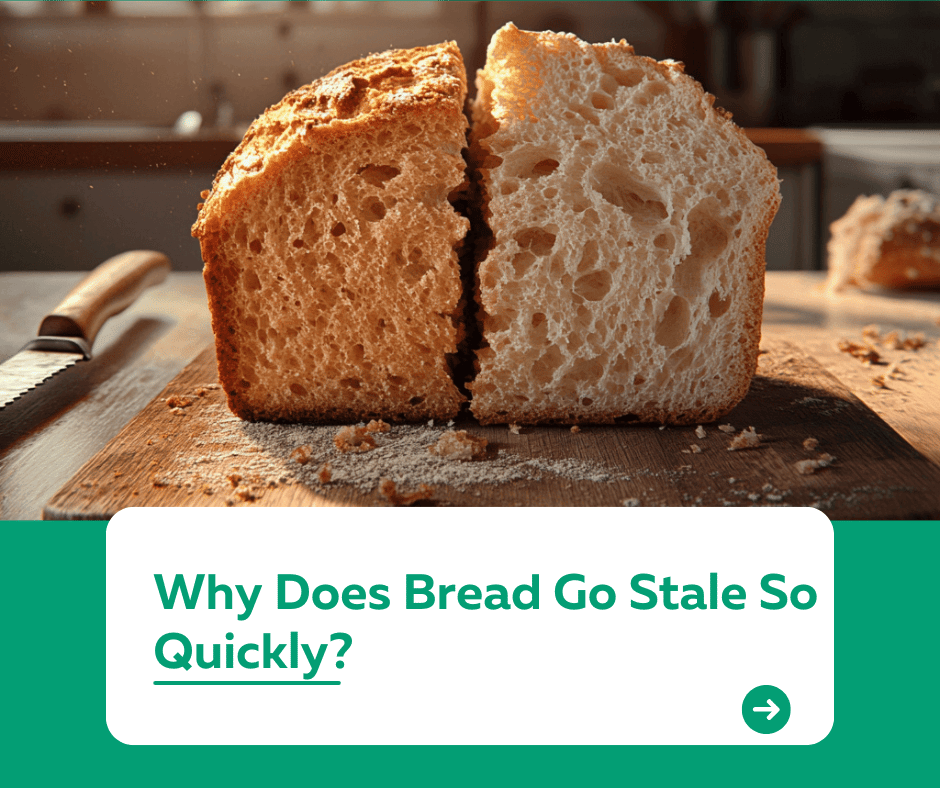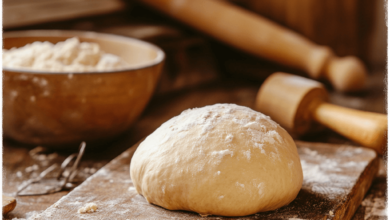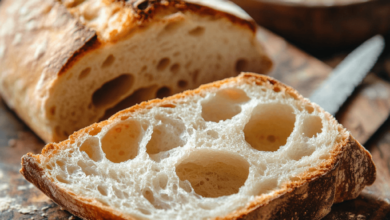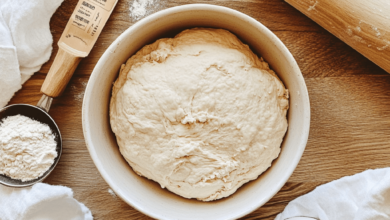Why Does Bread Go Stale So Quickly?

Introduction
Nothing beats the taste of fresh bread, but it seems to lose its softness and freshness almost overnight. Why does bread go stale so quickly? The answer lies in the science of starch, moisture, and how bread is stored. Let’s dive into the factors that cause bread to go stale and how to keep it fresh for longer.
1. What Causes Bread to Go Stale?
1.1 Starch Retrogradation
- What Happens: Starch molecules in bread recrystallize as it cools, making the bread firm and less moist.
- Why It Matters: This natural process causes the bread to lose its softness.
1.2 Moisture Loss
- What Happens: Bread gradually loses moisture to the air, leading to dryness.
- Why It Matters: Moisture evaporation is a key factor in staleness.
1.3 Exposure to Air
- What Happens: Air causes the crust to harden and accelerates moisture loss.
- Why It Matters: Improper storage speeds up the staling process.
2. Factors That Influence Staleness
2.1 Bread Type
- Artisan Bread: High moisture content keeps it fresher longer but makes it prone to molding if not stored properly.
- Store-Bought Bread: Preservatives slow down staleness but may affect taste.
2.2 Storage Conditions
- Room temperature, refrigeration, and freezing all impact how quickly bread goes stale.
2.3 Ingredients
- Enriched breads with milk, eggs, or fats stay softer longer than lean doughs.
3. Common Myths About Bread Storage
3.1 Refrigeration Keeps Bread Fresh
- Reality: Refrigeration speeds up starch retrogradation, making bread stale faster.
- Better Option: Store bread at room temperature or freeze for long-term storage.
3.2 Plastic Bags Prevent Staleness
- Reality: While plastic bags retain moisture, they can also make the crust soggy.
- Better Option: Use a bread box or wrap in a clean towel for balance.
4. How to Keep Bread Fresh Longer
4.1 Proper Storage
- Store bread in a cool, dry place away from direct sunlight.
- Use a bread box to maintain the ideal environment.
4.2 Freeze Bread
- Slice bread before freezing for easy portioning.
- Wrap tightly in plastic wrap and place in a freezer bag.
4.3 Refresh Stale Bread
- Revive stale bread by sprinkling it with water and heating it in the oven at 350°F (175°C) for 5–10 minutes.
5. Alternative Uses for Stale Bread
Don’t throw away stale bread! Repurpose it for:
- Breadcrumbs: Pulse in a food processor.
- Croutons: Cube, season, and bake.
- French Toast: Perfect for soaking up custard.
- Bread Pudding: Turn it into a delicious dessert.
Conclusion
Bread goes stale due to natural processes like starch retrogradation and moisture loss. While it’s impossible to stop bread from going stale entirely, proper storage techniques can help you enjoy fresh bread for longer. For more kitchen tips and tricks, visit our Kuestion.com.




